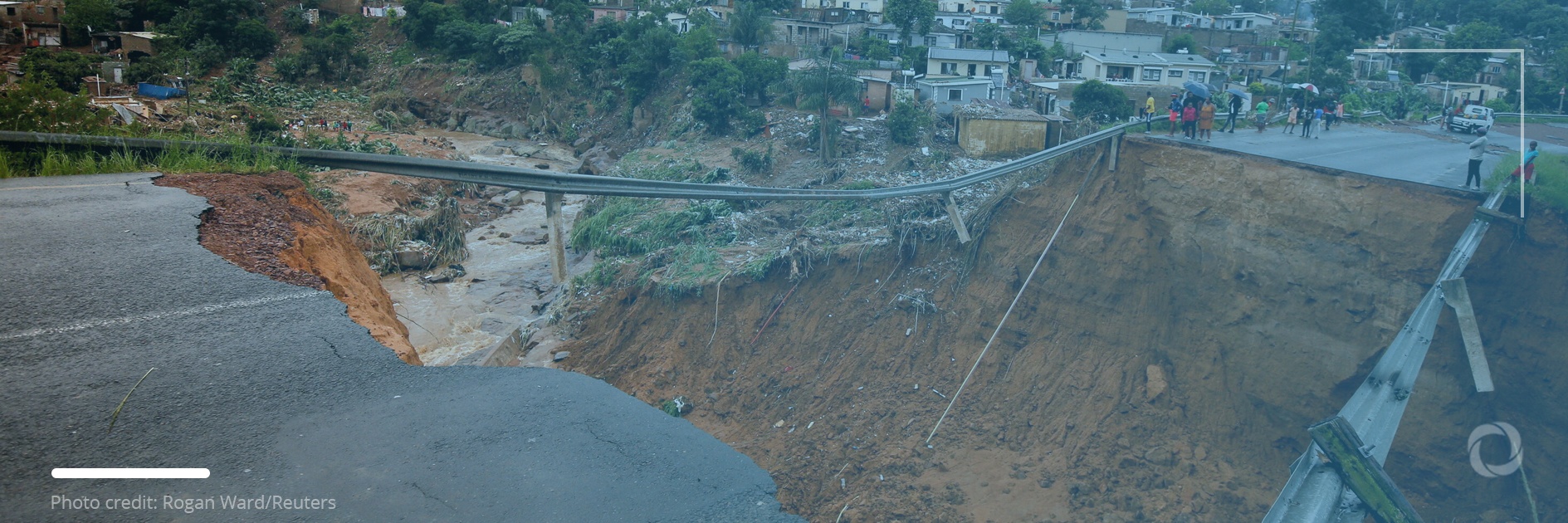South Africa declared a national state of disaster on 18 April 2022 due to the floods that had ravaged the eastern province of KwaZulu-Natal just a week earlier. This comes a mere two weeks after the country had finally lifted the state of disaster implemented at the start of the COVID-19 pandemic in March 2020.
During his address to the nation on 18 April 2022, President Cyril Ramaphosa revealed the consequences of the floods:
To date, a total of 443 people are known to have lost their lives in KwaZulu-Natal. Approximately 48 people are missing or unaccounted for.https://t.co/Tta75bAWX5
— Cyril Ramaphosa 🇿🇦 (@CyrilRamaphosa) April 18, 2022
- People: 443 deaths with 48 people missing or unaccounted for and 40,000 people displaced
- Housing: 4,000 houses completely destroyed and 8,000 houses damaged.
- Infrastructure: Access to the port severely hampered, roads damaged, 600 schools damaged with 16 schools still unreachable, 66 health care facilities affected
Francois Engelbrecht, Professor of Climatology, Global Change Institute at the University of the Witwatersrand and lead author of the Intergovernmental Panel on Climate Change (IPCC) Special Report on Global Warming of 1.5°C, told a local radio station that the weather pattern known as the cut-off low-pressure system is behind the extreme rainfall that has devastated parts of KwaZulu-Natal, which is South Africa’s third most populous province.
He noted that the weather system was also responsible for many of the flooding disasters that have affected South Africa in the past. Thus, in 2019, a similar weather system caused a mudslide in Durban and other parts of KwaZulu-Natal with around 70 people being killed in those floods. In 1987, around 900 millimetres of rain fell in just four days, leaving over 300 people dead in Durban.
Engelbrecht says the cut-off lows are increasing in frequency and resulting in more extreme rainfall events and he believes this is due to global warming.
“There’s very clear evidence that the number of heavy rainfall events has systematically been increasing over the last five decades. We should expect increasingly more intense rainfall coming from these cut-off low-pressure systems that occur in South Africa reasonably often,” he said.
With regard to the recent floods, Engelbrecht explained that the weather system formed over the central interior of South Africa then it slowly moved eastward. It moved from inland into the Indian Ocean, along the KwaZulu-Natal south coast and a combination of the upper part of this weather system with all the moisture that was brought in from the Indian Ocean into KwaZulu-Natal was really the perfect storm, the ideal ingredients to cause very heavy falls of rain to occur.
According to the 2018 C40 Cities Future We Don’t Want report, Durban, the largest city in KwaZulu-Natal, is one of the country’s four coastal cities that have been identified by experts as being at risk of severe flooding by 2050.
C40 is a network of the world’s mega-cities fighting climate change.
Research from C40 Cities, Creating local green jobs: The United States, Italy in South Africa, which was released in March 2022, argued that investing in adaptation and nature-based solutions to tackle extreme weather events, such as floods and droughts, could produce an additional 705,000 sustainable jobs across the country.

